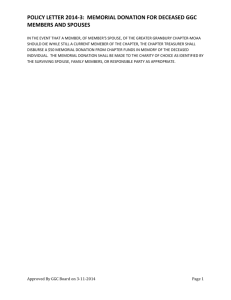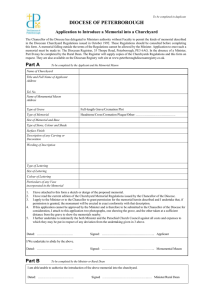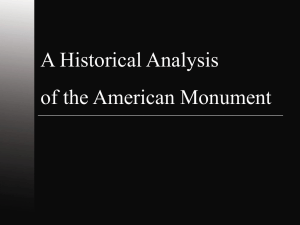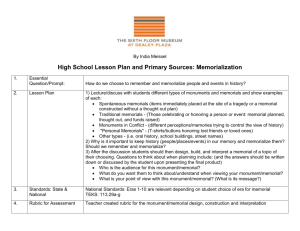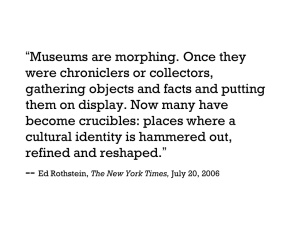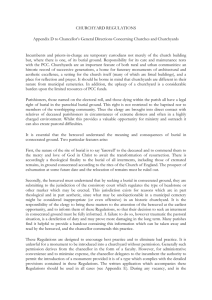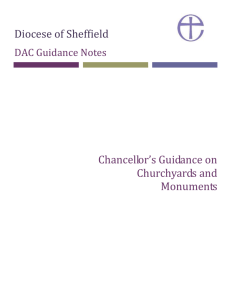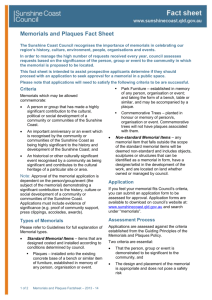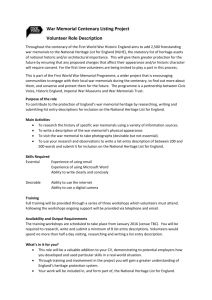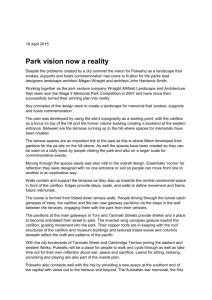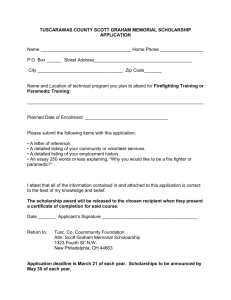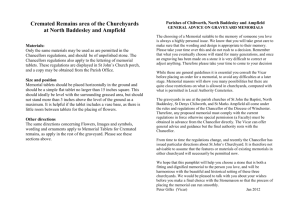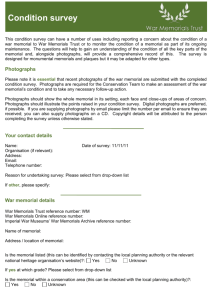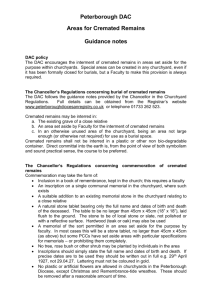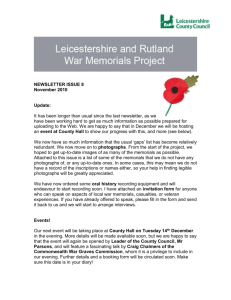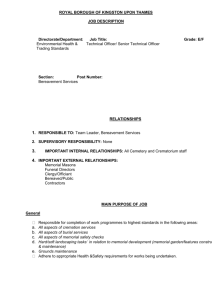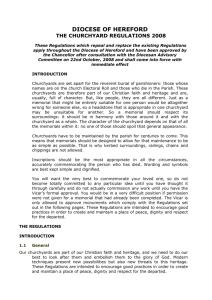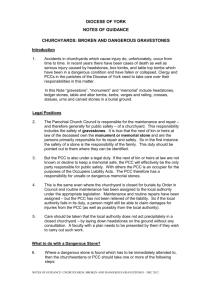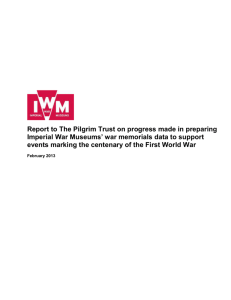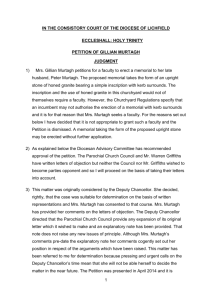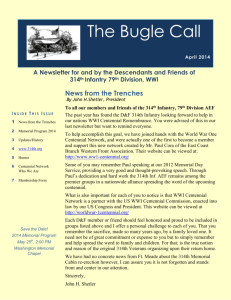WWI artefacts recording- notes for volunteers
advertisement
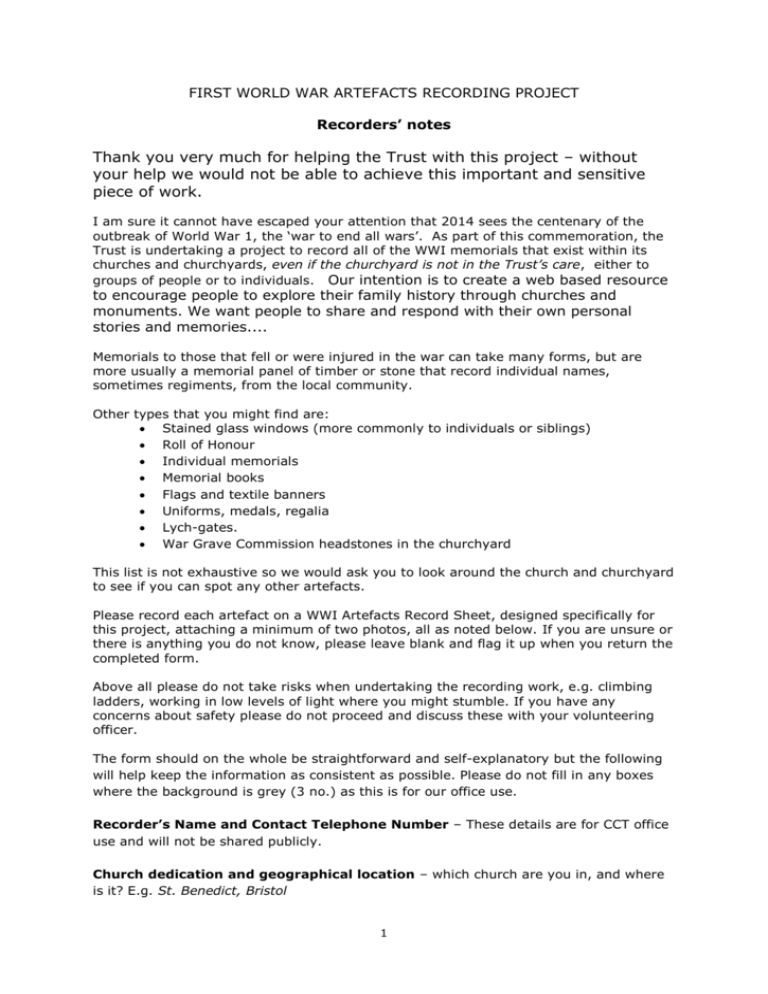
FIRST WORLD WAR ARTEFACTS RECORDING PROJECT Recorders’ notes Thank you very much for helping the Trust with this project – without your help we would not be able to achieve this important and sensitive piece of work. I am sure it cannot have escaped your attention that 2014 sees the centenary of the outbreak of World War 1, the ‘war to end all wars’. As part of this commemoration, the Trust is undertaking a project to record all of the WWI memorials that exist within its churches and churchyards, even if the churchyard is not in the Trust’s care, either to groups of people or to individuals. Our intention is to create a web based resource to encourage people to explore their family history through churches and monuments. We want people to share and respond with their own personal stories and memories.... Memorials to those that fell or were injured in the war can take many forms, but are more usually a memorial panel of timber or stone that record individual names, sometimes regiments, from the local community. Other types that you might find are: Stained glass windows (more commonly to individuals or siblings) Roll of Honour Individual memorials Memorial books Flags and textile banners Uniforms, medals, regalia Lych-gates. War Grave Commission headstones in the churchyard This list is not exhaustive so we would ask you to look around the church and churchyard to see if you can spot any other artefacts. Please record each artefact on a WWI Artefacts Record Sheet, designed specifically for this project, attaching a minimum of two photos, all as noted below. If you are unsure or there is anything you do not know, please leave blank and flag it up when you return the completed form. Above all please do not take risks when undertaking the recording work, e.g. climbing ladders, working in low levels of light where you might stumble. If you have any concerns about safety please do not proceed and discuss these with your volunteering officer. The form should on the whole be straightforward and self-explanatory but the following will help keep the information as consistent as possible. Please do not fill in any boxes where the background is grey (3 no.) as this is for our office use. Recorder’s Name and Contact Telephone Number – These details are for CCT office use and will not be shared publicly. Church dedication and geographical location – which church are you in, and where is it? E.g. St. Benedict, Bristol 1 2 Item/title – what is it? E.g. war memorial, flag, stained glass window Location within church or churchyard – please give straightforward instructions using compass directions, so if a visitor or member of staff wanted to find it they could do so relatively easily e.g. west wall of north aisle or 14 paces north and 5 paces west from north aisle north door. Dimensions – please give approx. dimensions in centimetres or metres. If difficult to measure, best guesses will be sufficient! Physical description – how would you describe it to someone over the telephone e.g. war memorial in carved wood, three panels. Gilded lettering recording the men who were killed in action in the centre panel, carved relief of war scenes on right and left panels. Historical associations or references – WWI lasted for just over 4 years and key events took place during this time, e.g. the battle of the Somme, Passchendaele. Some memorials, particularly those to individuals, may make reference to these and researchers will be keen to search and find this information. Materials/techniques – stone, timber, plaster, silk, metal……….and any applied decoration, such as gilding, paint etc. Artist/makers/author – for some of the more ornate or special artefacts the person who designed or made the artefact may be recorded. Usually this is on the side or underneath where it can be read but only if looked for. We expect most WWI artefacts will not have any such marks but please take a look. Inscription – this may be to a single person on an individual memorial, or a list of names and possible regiments on a memorial board or roll of honour. Please record everything you can read, however insignificant it may seem, including dates and all initials. If there is insufficient space on the form please use a blank page and attach at the back/end. Please copy the inscription EXACTLY as it appears on the memorial; for instance, keep all abbreviations as they are, use capital letters if that is how they appear on the memorial, and indicate when Condition – is the artefact generally in good, fair or poor condition – please use one of these three terms and give detail if you consider the memorial to be in a poor condition. Photographs – please attach two colour digital photographs of the artefact, one a close up and one giving its context within the church. Date recorded - please finish the form by noting the date. We’d be grateful if you would send completed forms to the Trust as follows: Electronic forms - ww1project@thecct.org.uk Paper forms - to your local Volunteering Officer or alternatively post FAO Susan van Schalkwyk, The Churches Conservation Trust, Society Building, 8 All Saints Street, London N1 9RL

